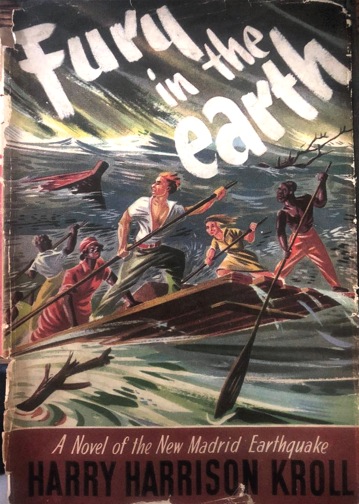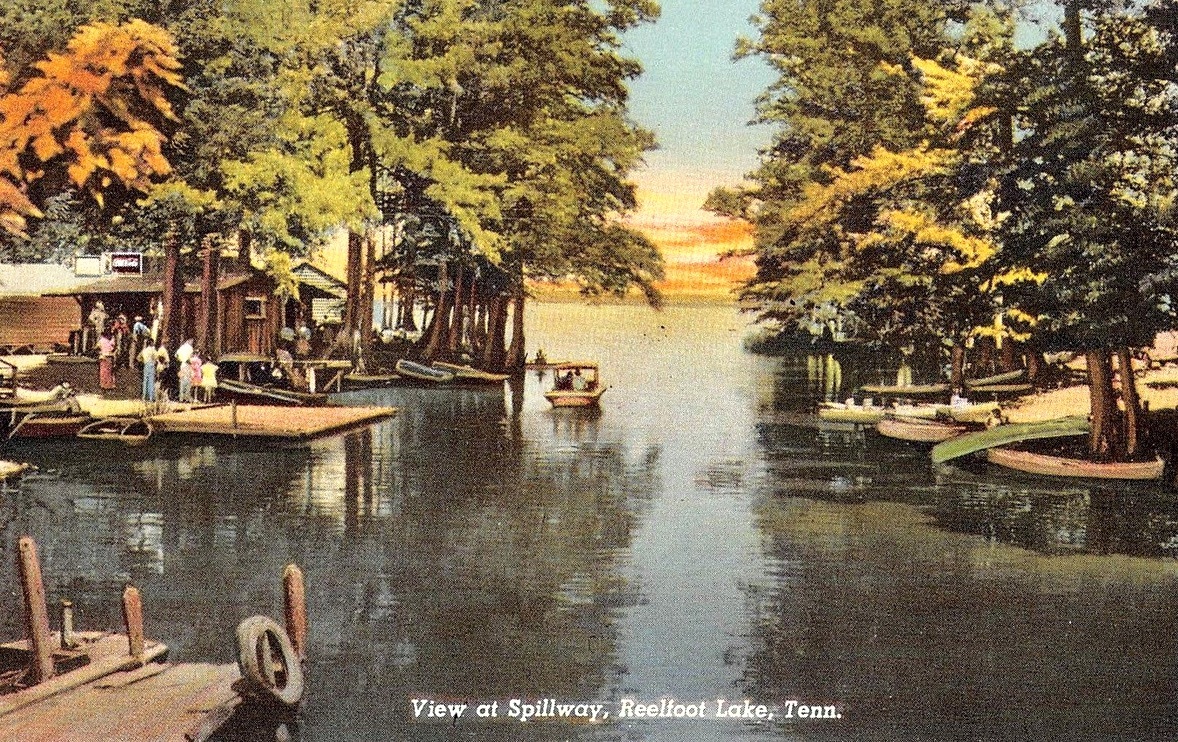
Michelle and I just went for a quick trip to Virginia Beach, so I took Kroll’s Fury in the Earth to keep me company.
Small enough to be easily read in a day, it was published by Bobbs-Merrill in 1945, and is a fictionalized account of what could have happened in the town of New Madrid, Missouri in 1811 and 1812 when a series of powerful earthquakes and aftershocks struck the area.
While Kroll’s account was fictional, in reality the earthquakes that shook the region then are included at the top of the list of the largest ever in the United States. According to the USGS Earthquake Hazards Program, what we now call the New Madrid Earthquakes was two to three times as large as that of the 1964 Alaska earthquake and 10 times as large as that of the 1906 San Francisco earthquake. No information is available from USGS on how it compared to Earthquake the 1974 film staring Charlton Heston and Ava Gardner.
Because there was no way to register the strength of an Earthquake in North America at that time, and fortunately there were actually very few people living in the New Madrid region, the estimated magnitudes of this series of earthquakes vary and have been determined by researchers’ using newspaper articles, personal written accounts and other records of the ground shaking and damage. More from the USGS
According to stories at the time, the earthquakes were felt as far away as New York, Boston, Montreal, and Washington. President James Madison and his wife, Dolly, were said to have felt them in the White House and the shocks caused church bells to ring as far away as Boston. The force of the earthquakes destroyed thousands of acres of forest and created Reelfoot Lake. According to rivermen who lived through the earthquakes, the Mississippi River actually began to flow backwards and, for a short time, the river included a couple of waterfalls.

Reelfoot Lake is located in the northwest corner of Tennessee and for decades has been known as a great place for boating, camping, fishing and bird watching.
Where cypress trees have risen from the water for more than 200 years, Harry Harrison Kroll created an entire village for Fury in the Earth.
“In Fury in the Earth Mr. Kroll’s fertile imagination has re-created New Madrid and peopled it with its few Spanish landed families, its pioneer American settlers and the roistering rivermen who visited it. This is the story of what might have happened to them in the days of the mighty ‘quakes.” From the Fury dust jacket.
Fury includes characters like balloon-bosomed innkeeper Aunt Sook; her “handsome wench” of a daughter, Betsy Lou; wealthy, old Spanish aristocrat Don Carlos; and riverman Hogshead Bolivar.
Although the style and story line of Fury is not something I would ordinarily get into—it reads a bit like a cross between a disaster movie of the seventies and The Walking Dead—it is fun to pay attention to Kroll’s use of dialect, something for which he was noted.
“Come any step farther and I’ll kill the first man that puts his foot on my porch! Don’t ye come up thar!” he repeated, sighting at Hogshead Bolivar, who was pushing through the crowd and came up on the steps.
For a little time the nonplussed people stared at this new Ad Knox whom they never before had seen; and Knox gave them look for look. His rifle barrel did not waiver. Even when the ground shook he seemed to keep that gun pointed true.
“You got ham meat in thar, Ad Knox?” Bolivar finally asked.
“He got hoardings,” Jeff replied when Knox did not speak.
“Where you got your hoardings, Ad Knox?” Bolivar demanded.
Knox did not deign to change his eyes. Jeff said, “He got ‘em hid up in the loft, all wropped in buffalo hides to make ‘em look like bales.” Fury, 143.

While there was some loss of life and an impact to the landscape of the region, most early settlers escaped the quakes and lived to settle elsewhere. The greatest loss of life was from those who drowned when their boats sank in the Mississippi River. Although Fury in the Earth is a fictionalized account with characters that were completely from Kroll’s imagination, he does include a list of sources including old newspaper and magazine articles and a few books. However, I think his best source was personal. In the bibliography, he writes:
…Newspaper clippings, many very old, from papers in Obion, Weakly, and other counties hereabouts were used, but I still like to think not the least valuable of all were the excited imaginations of a boy who once waded Reelfoot Lake at its narrowest place, and climbed a cypress tree to stare into the dark waters which were said to be bottomless in that same sinister and mysterious body—that boy who I was many years ago. Fury, 255.
You can find more about my family lines at HaywoodCountyLine.com or read more blog posts about the history of West Tennessee on my blog page.
